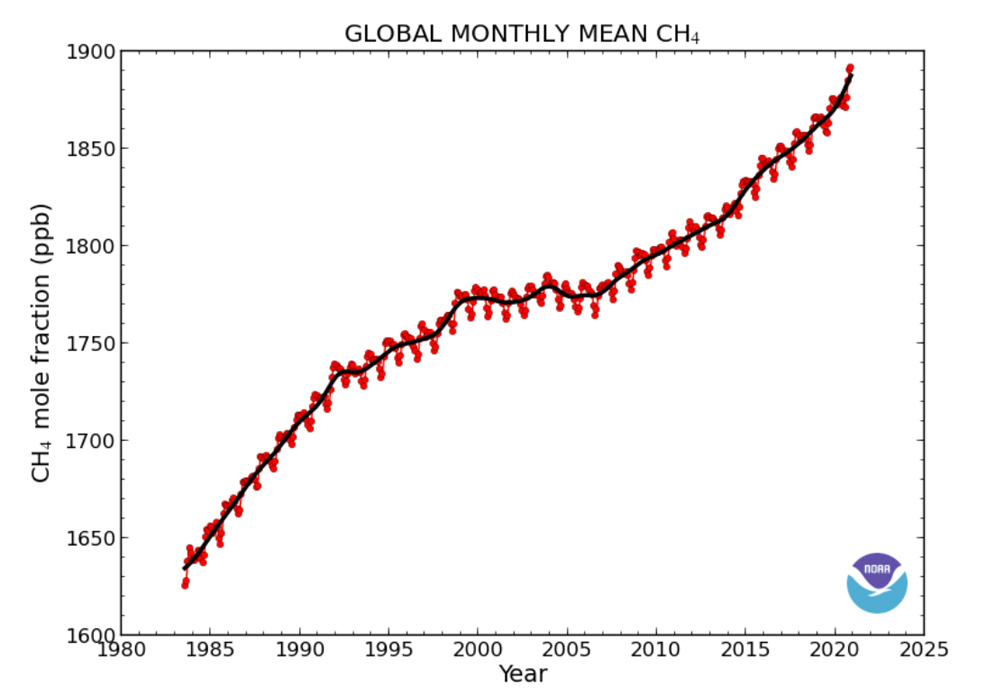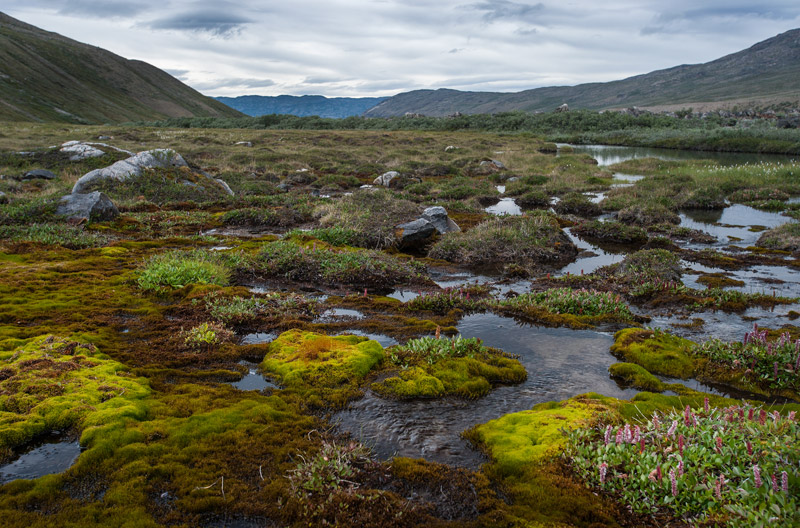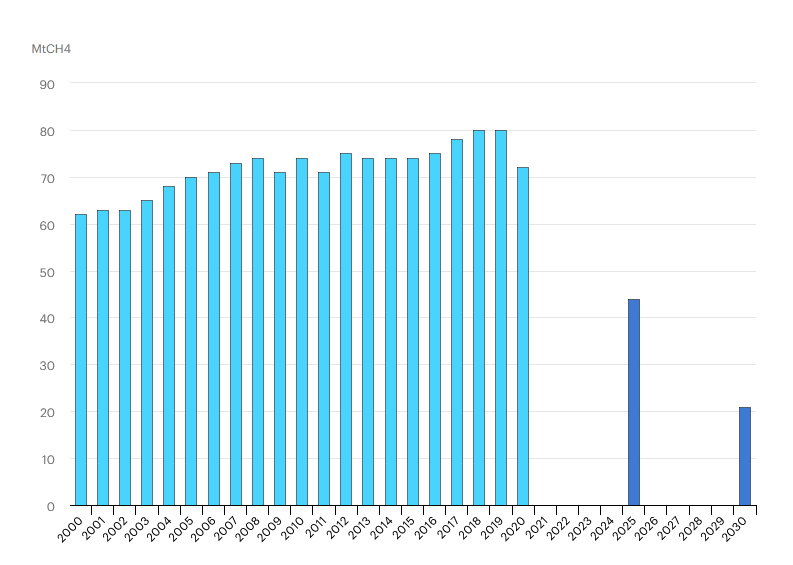
12th April 2021 Largest increase in methane emissions since records began The National Oceanic and Atmospheric Administration (NOAA) reports the largest annual increase in methane emissions since records began, with a rise of 14.7 parts per billion (ppb) in 2020.
An oft-forgotten greenhouse gas, methane is the second most significant driver of global warming after carbon dioxide (CO2). While accounting for only 17% of total anthropogenic emissions (versus 74% for CO2), it nevertheless has a global warming potential 72 times greater than CO2 on a per-molecule basis when measured over a 20-year period and 34 times over a 100-year period. Methane emissions remained at a low and stable level for millennia after the end of the last Ice Age, generally between 600 and 700 parts per billion (ppb). However, a rapid increase began during the onset of the Industrial Revolution, which continues to this day. Human activities responsible for methane release include fossil fuel use, agriculture, and waste. Following a brief plateau in the early 2000s, the global atmospheric concentration of methane resumed its upward trajectory. A study in 2014 suggested that wetland areas – such as swamps, marshes, fens, and peatlands – had become a major source of this growth. Scientists found the north, in particular, to be experiencing remarkably fast methane release, in part due to thawing permafrost in and around the Arctic.
This month, a preliminary analysis by NOAA shows that methane release accelerated by a record amount in 2020. This occurred despite a slowdown in economic activity due to the COVID-19 pandemic. The global average burden of methane for December 2020, the last month for which data has been analysed, stood at 1892.3 ppb. That is 17.7 ppb higher than December 2019. The mean average growth for the year was 14.7 ppb. This would represent an increase of more than 115 ppb, or 6%, since 2000. Lori Bruhwiler, a Physical Scientist at NOAA's Earth Systems Research Laboratory, called the jump in methane levels "fairly surprising – and disturbing", adding "We don't usually expect them to jump abruptly in a year." The carbon isotopic composition of methane in the NOAA air samples, analysed by the Institute of Arctic and Alpine Research at the University of Colorado, indicates that a primary driver of the increased methane burden likely comes from biological sources. In other words, wetlands or livestock, rather than thermogenic sources like oil and gas production. "Although increased fossil emissions may not be fully responsible for the recent growth in methane levels, reducing fossil methane emissions are an important step toward mitigating climate change," said Ed Dlugokencky, Atmospheric Chemist at NOAA. The International Energy Agency (IEA) estimates that methane emissions from the energy industry declined by about 10% in 2020. The intensity of emissions varies widely across countries that produce oil and gas. Based on its annual data for 2020, the IEA calculates that the emissions intensity among the worst performing countries is more than 100 times higher than the better ones. This underlines the potential for many countries to achieve rapid and huge improvements in performance. Under its Sustainable Development Scenario, published in October 2020, the IEA presents a pathway for achieving major reductions of methane emissions in a realistic and cost-effective way. The agency believes that, if its recommendations are followed, worldwide oil and gas sector methane emissions could be cut from 72 megatons in 2020 to 44 megatons by 2025 and 21 megatons by 2030.
Comments »
If you enjoyed this article, please consider sharing it:
|









